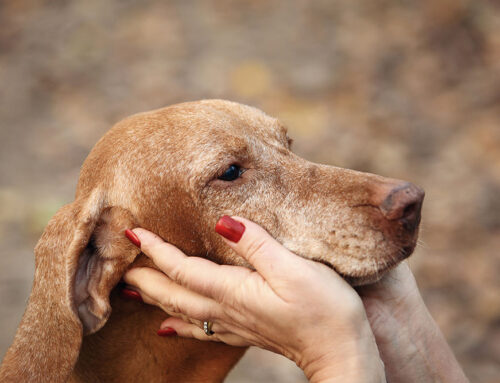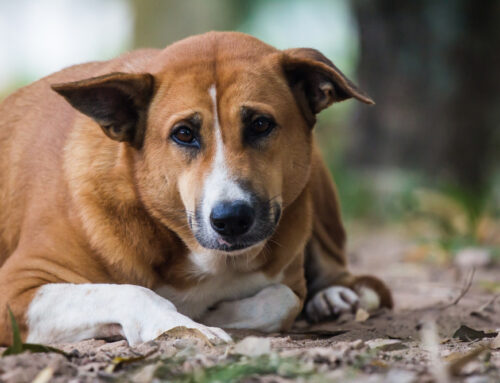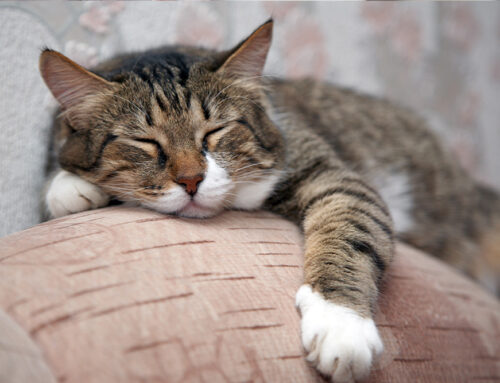Hey humans, Boh the beagle here! With summer in full swing, my human Charles and I were talking about ways to beat the heat, so I wanted to share some important heat safety tips on how to stay cool during a Kentucky summer.
People sweat buckets when the temperature skyrockets, but unfortunately, your pet doesn’t sweat like you and has a pretty tough time cooling off. This is especially true for brachycephalic breeds with short noses, such as my friends Fiona the Frenchie, Sam the shih tzu, and Polly the pug.
So, how can you prevent your fun in the sun from turning into an emergency trip to the kind folks at Central Kentucky Veterinary Center? The key is to take preventive measures, know what to look for, and what to do in an emergency.
Too Hot to Handle: Heat stress and heatstroke in pets
When I get too hot, I can suffer from heat stress or even heatstroke, which is super serious and can be life-threatening. Because pet’ bodies are covered in fur, we mainly rely on panting and a few sweat glands in our paws to release heat, but sometimes it’s not enough, so here’s what to keep an eye out for:
- Excessive panting — If I’m panting more than usual, that’s a red flag.
- Drooling — You might notice that I’m drooling more than usual.
- Restlessness — I might seem anxious or unable to settle down.
- Increased heart rate — My heart might be beating more quickly than normal.
- Red or pale gums — Check my gums. If they’re red or pale, I may be overheating.
- Vomiting or diarrhea — This can happen if I’m extremely overheated.
- Weakness or lethargy — I might seem overly tired or even collapse.
- Confusion or dizziness — I might stumble around or seem disoriented.
- Seizures — If my case is severe, I might have a seizure.
7 ways to prevent overheating in pets
I made my human Charles a list of ways to help me beat the heat. Here are some of my favorite tips for staying cool and comfy during hot summer days:
- 1. Keep the house cool — I like to relax in a cool spot, whether in an air-conditioned room or with a fan blowing. Tile floors are my favorite—they stay nice and cool.
- 2. Frozen treats — How about some icy snacks? Freeze my favorite treats or make me some pet-safe ice pops with water and a bit of my favorite flavor.
- 3. Avoid the hottest parts of the day — Let’s go for walks early in the morning or late in the evening when the temperature is cooler. The midday heat is too much for me.
- 4. Stay in the shade — When we’re outside, let’s stick to shady areas. Parks with lots of trees are perfect.
- 5. Paw protection — Hot pavement can burn my paws. Test it with your hand. If the surface is too hot for you, it’s too hot for me. You can get me some booties, or we can walk in the grass.
- 6. Keep me hydrated — I always need plenty of fresh, cool water. Feel free to throw in some ice cubes. Always bring bottled water and my portable water bowl on our walks, so I can have a drink wherever we are.
- 7. Shade is essential — If we’re outside for a while, make sure a shady spot is available where I can take a break from the sun.
Steps to help an overheated pet

If Charles thinks I’m overheating and at risk for heatstroke, he knows he needs to act quickly. Here’s what you should do if your pet starts showing those scary signs we talked about earlier:
- 1. Get to a cool area — Move your pet out of the heat and into a cool, shaded, or air-conditioned area right away.
- 2. Use water — Wet your pet down with cool—not cold—water. Focus on their head, neck, and chest. You can use a wet cloth or even gently hose them down if you’re outside.
- 3. Run a fan — Direct a fan toward your pet to help them cool off more quickly.
- 4. Offer drinking water — Offer small amounts of cool water. Don’t force your pet to drink if they’re not interested, but make sure it’s available.
Remember, cooling your pet is just the first step. Heatstroke is a serious medical emergency that needs immediate veterinary attention. This condition can cause your pet internal damage, so have our team check out your pet, even if they seem to have recovered.
Prevention is always better than treatment, but knowing what to do in an emergency can save your pet’s life. If you have questions about pet summer safety, contact our Central Kentucky Veterinary Center—where “the best pets deserve the best care.”







Leave A Comment